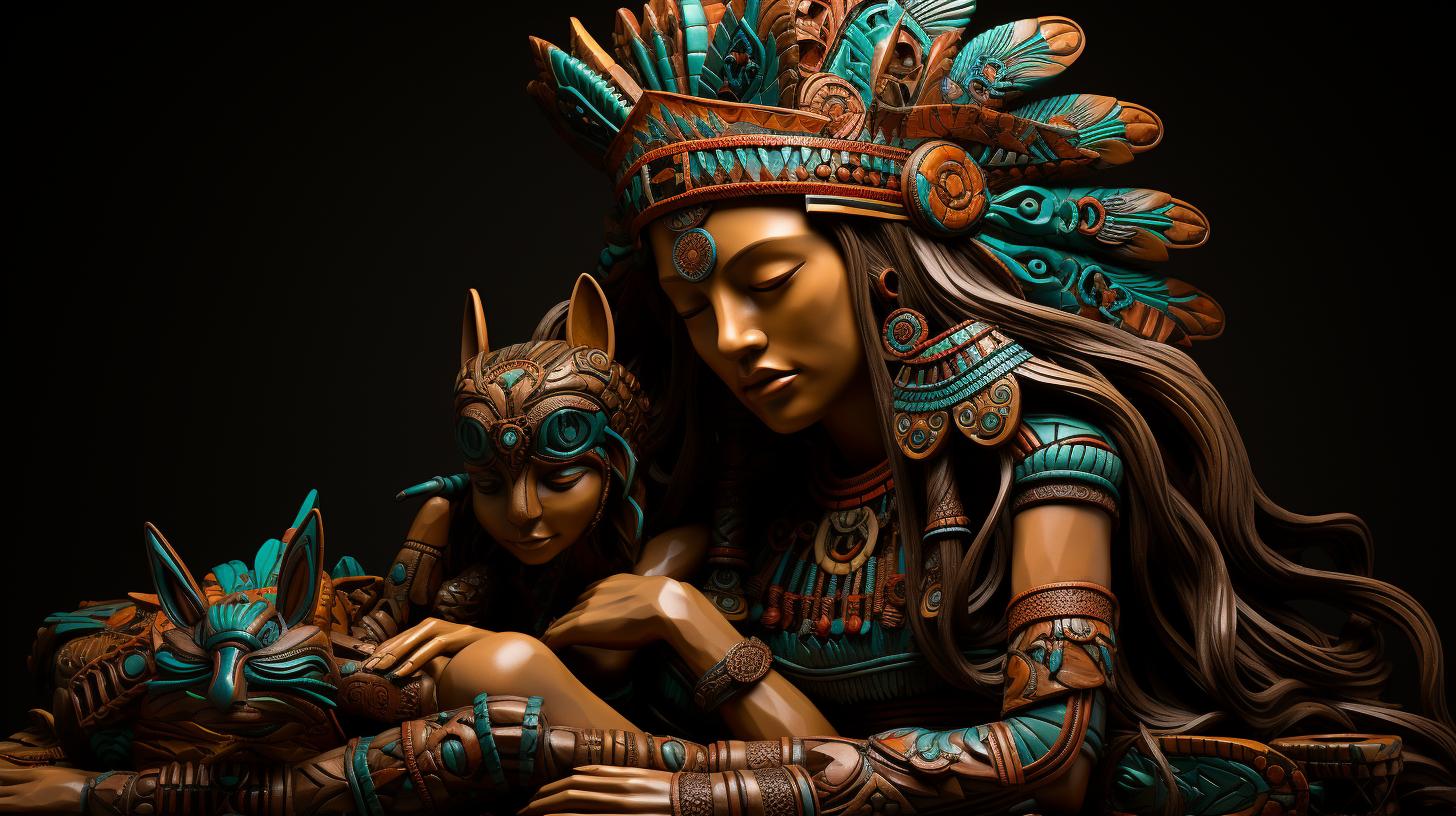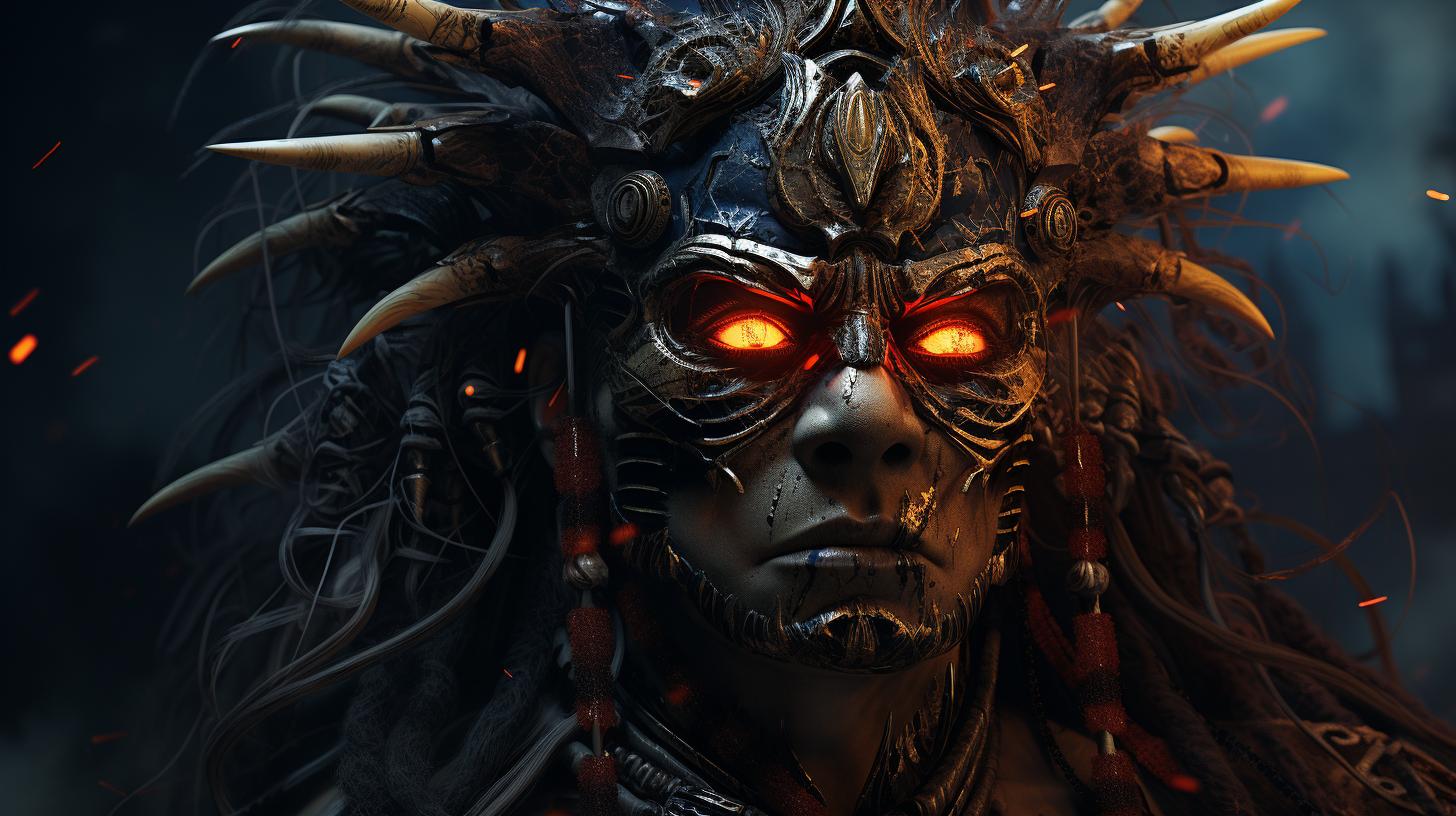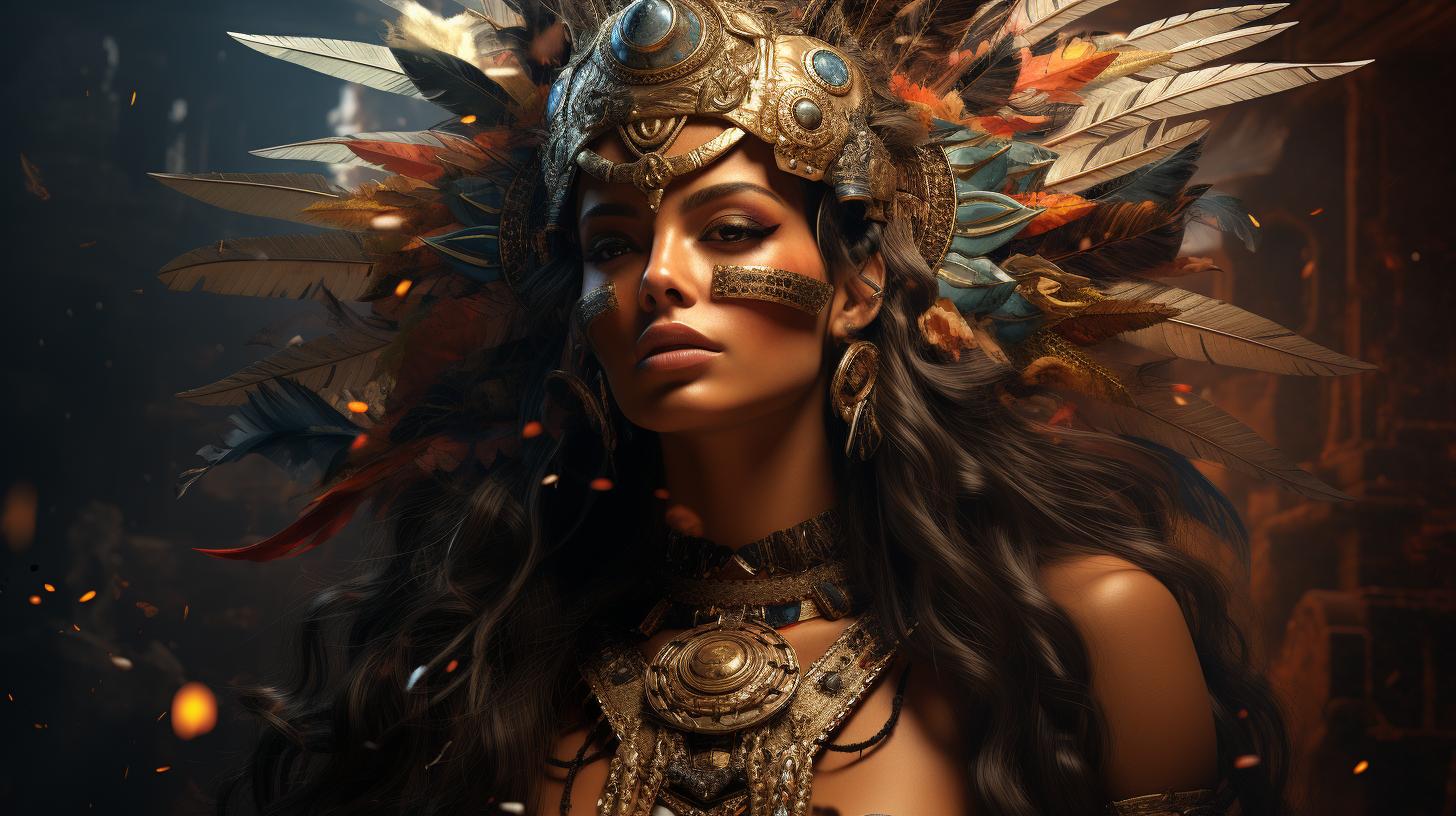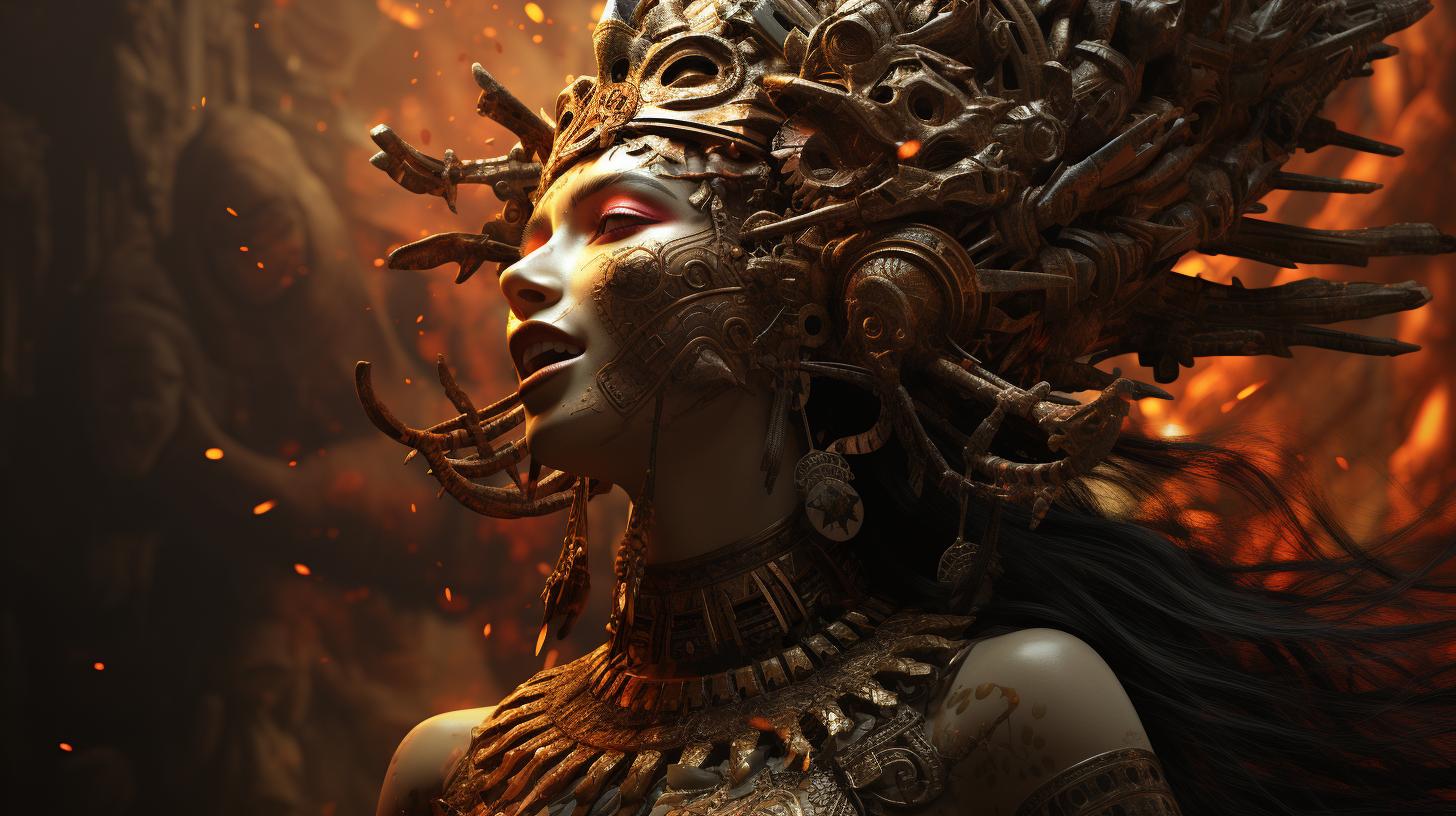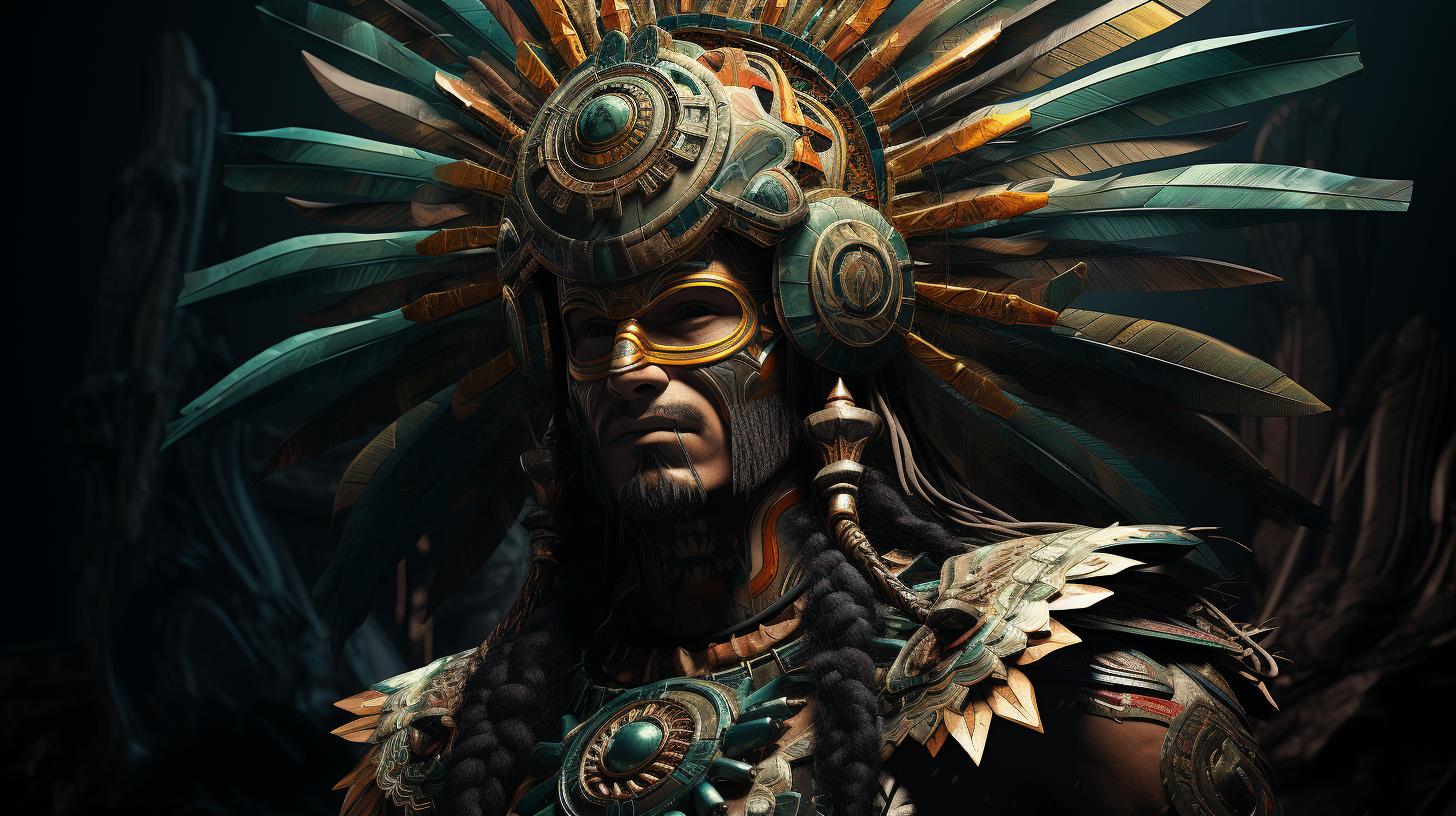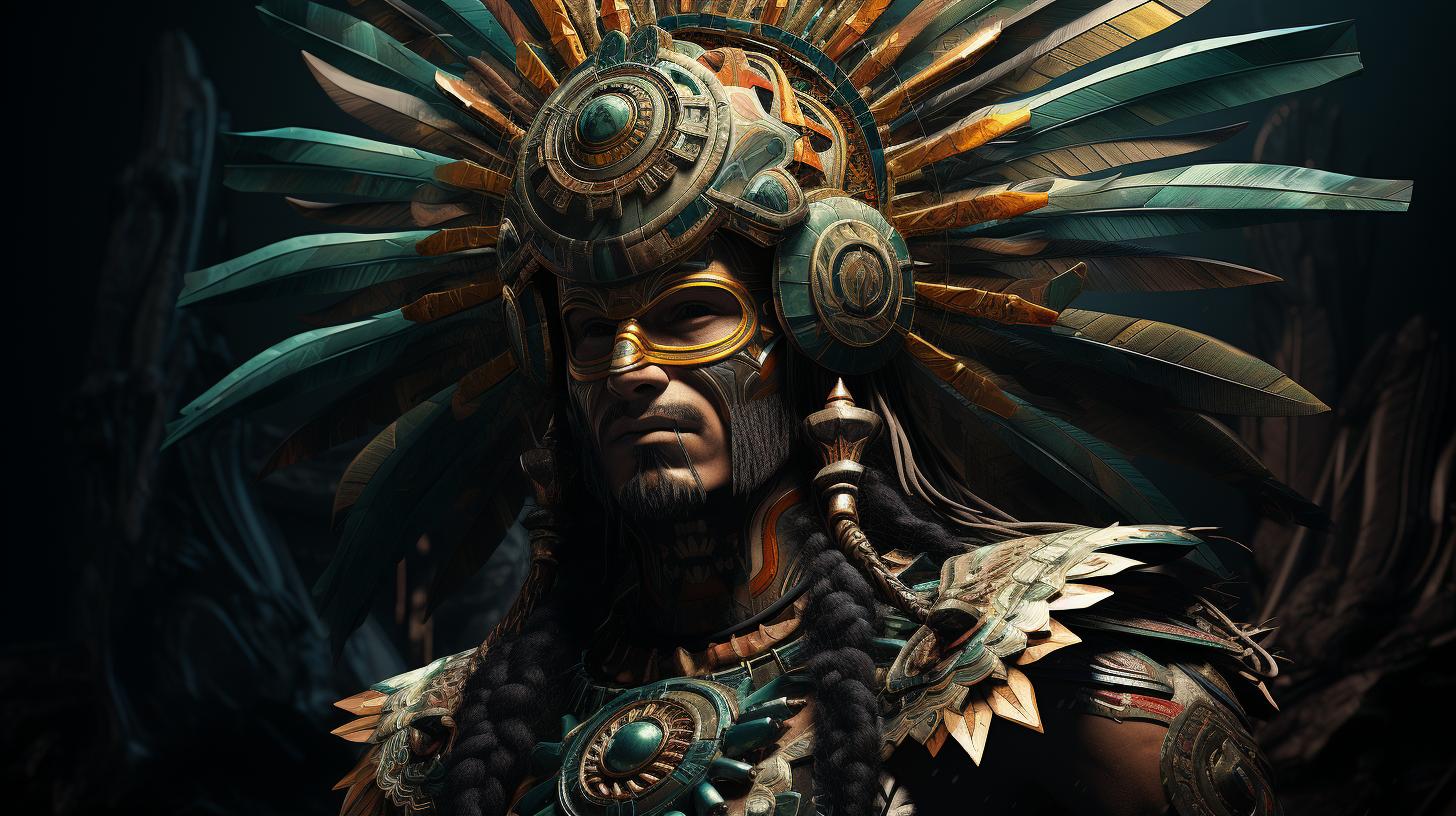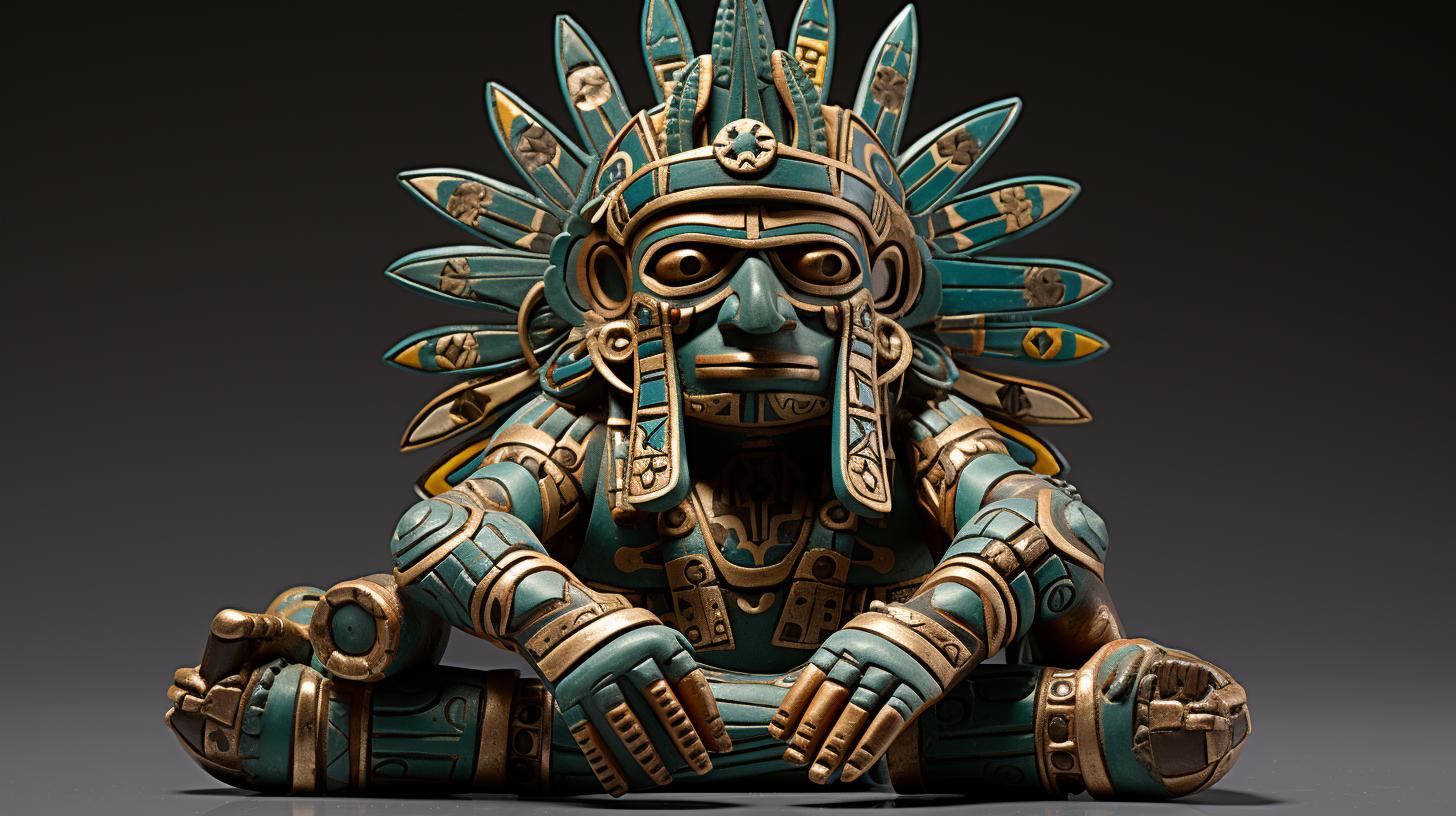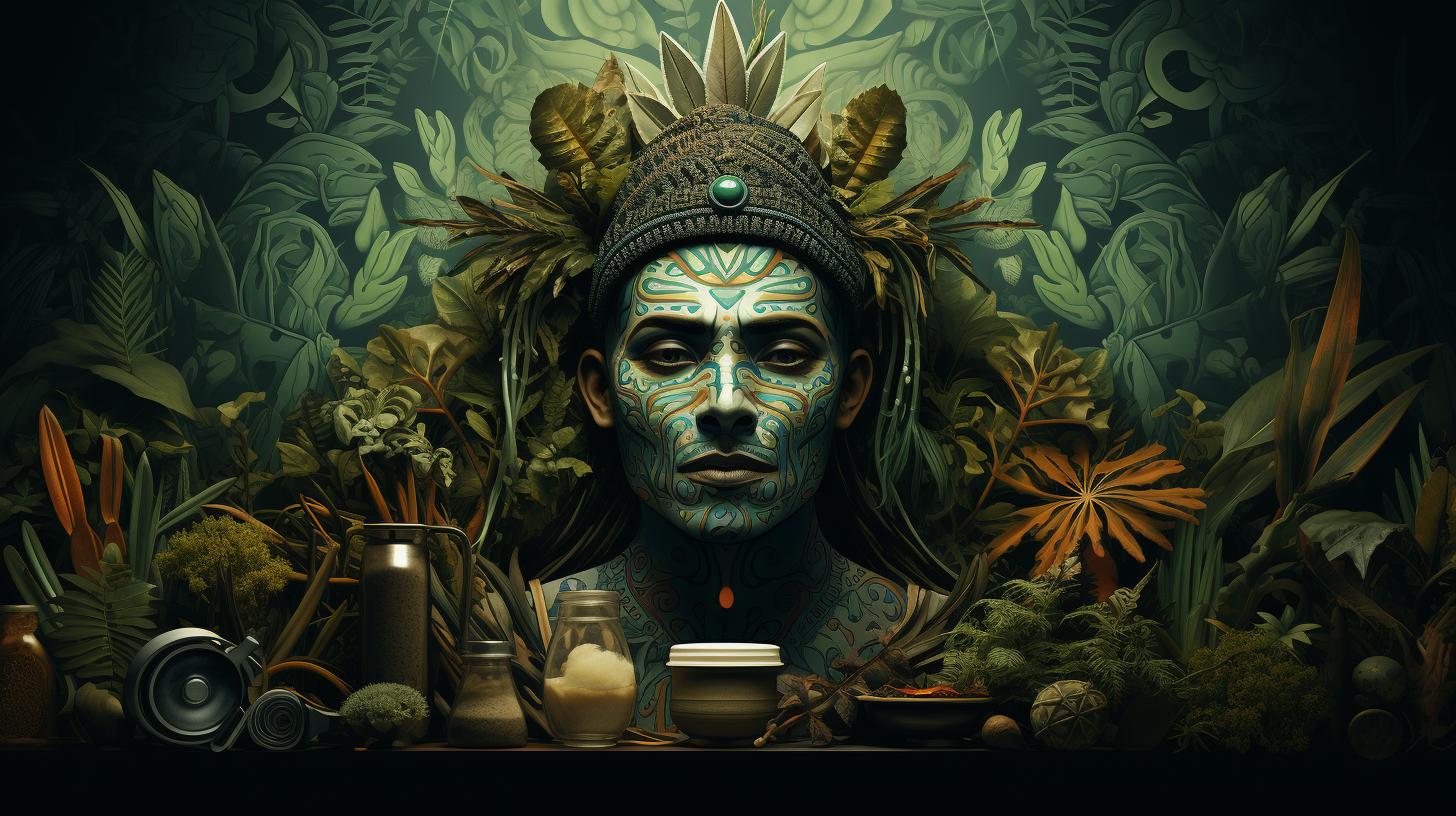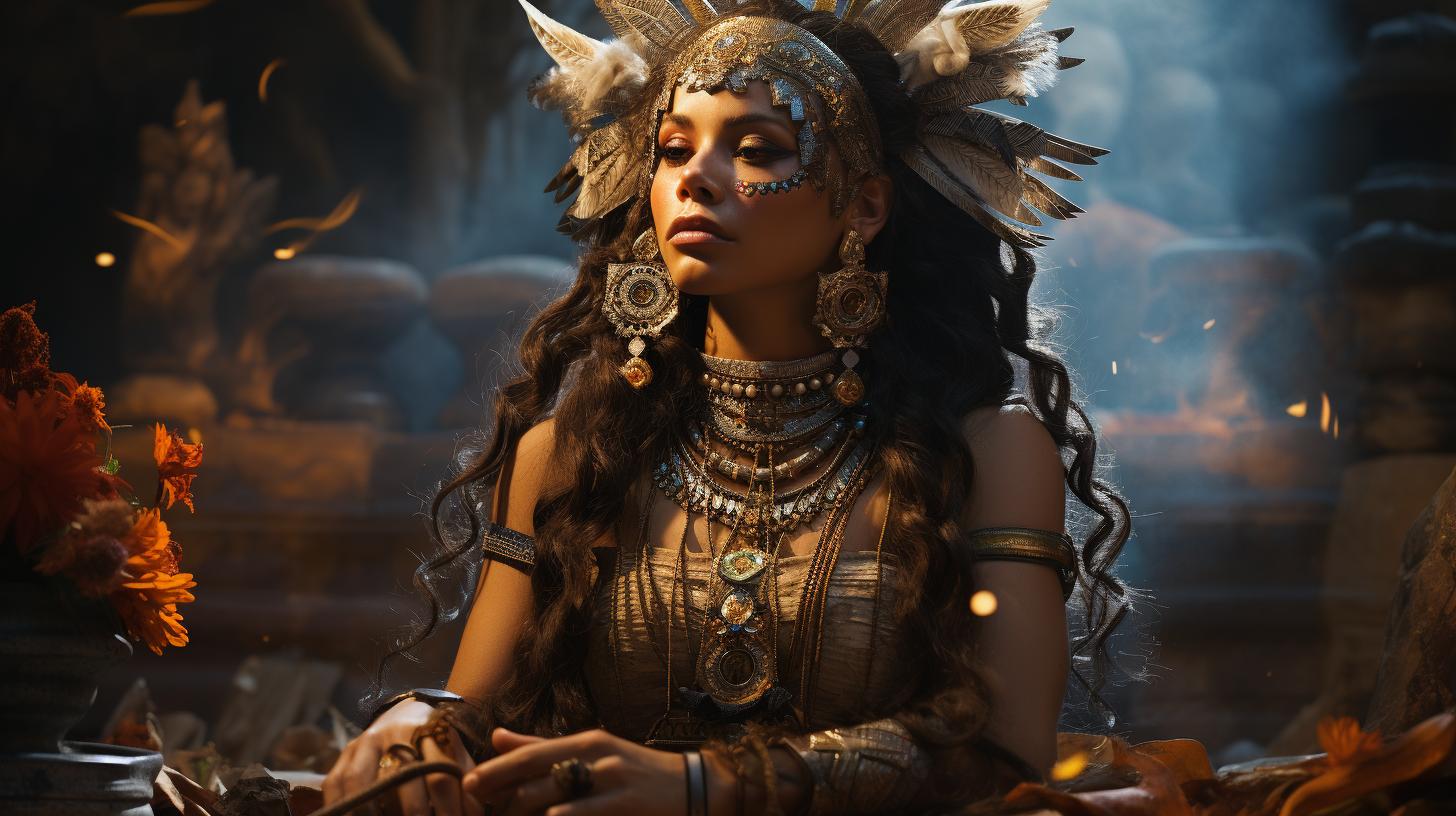Cihuacoatl Goddess: Exploring the Ancient Mesoamerican Deity
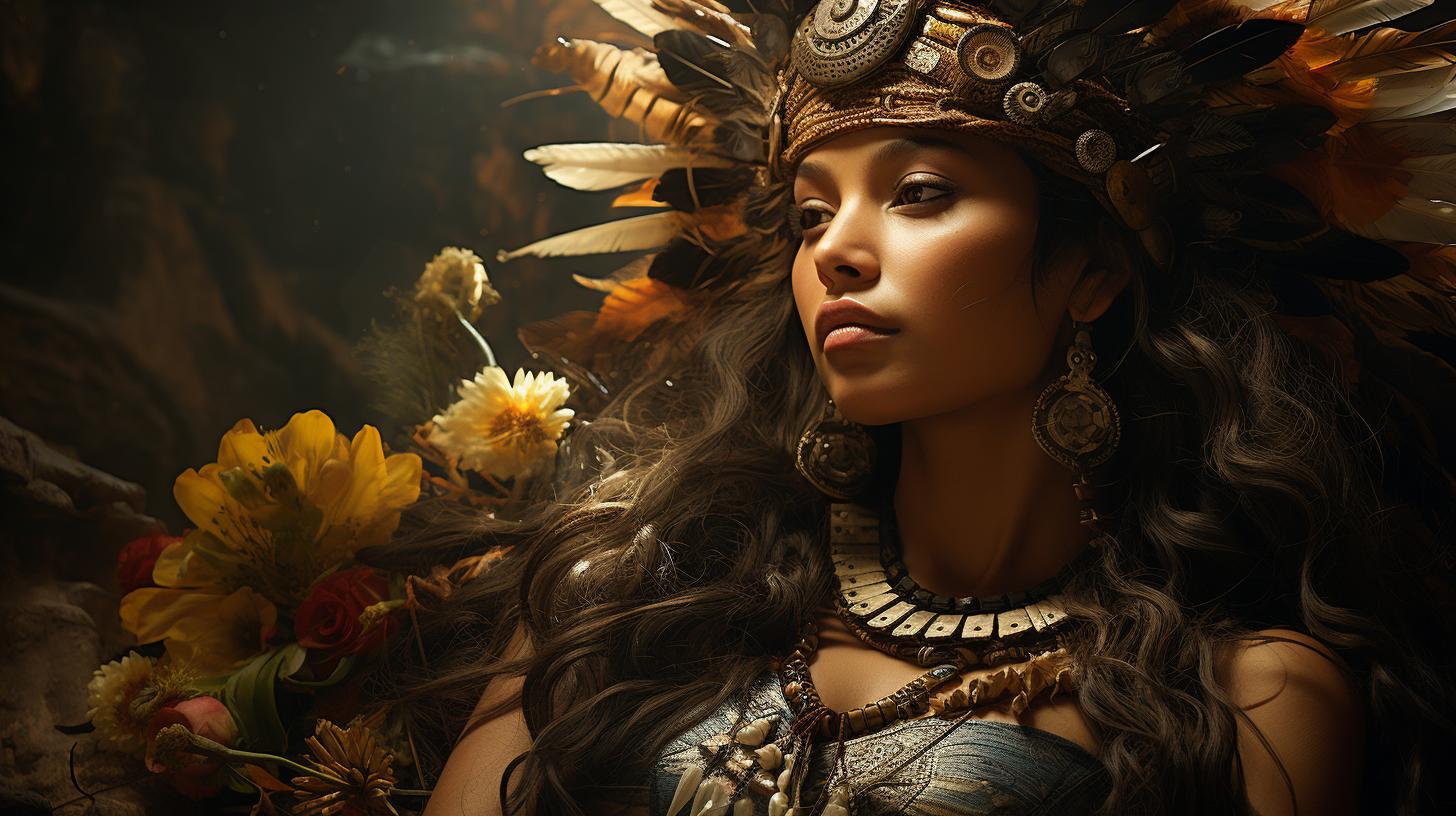
Cihuacoatl goddess, a significant deity in Mesoamerican mythology, holds a prominent place in the cultures of both the Aztecs and the Mayans. Known for her associations with fertility and motherhood, she played a vital role in guiding and protecting these ancient civilizations.
This article explores the origins, depictions, and connections of Cihuacoatl, as well as her significance in the context of Mexican goddesses and the symbolism of motherhood. Furthermore, we delve into her cultural and historical importance in Mesoamerica, as well as her modern interpretations and representations in contemporary art and literature.
Cihuacoatl Goddess
Cihuacoatl goddess holds a significant place in Mesoamerican mythology as a powerful deity associated with motherhood and fertility. Dive into the rich cultural tapestry of ancient civilizations such as the Aztecs and Mayans as we explore the origins and meaning of Cihuacoatl, shedding light on her diverse manifestations in different mythological contexts.
Origins and Meaning of Cihuacoatl
Unearth the mystical origins of Cihuacoatl and delve into the layers of meaning behind her name. Discover the symbolism and significance embedded in her title as “aquella que se envuelve en una red de arañas” (she who is surrounded by a spider’s web).
Explore how this powerful epithet reflects her role as both protector and guide for the Aztec people.
Cihuacoatl in Aztec Mythology
Journey into the heart of Aztec mythology and encounter the awe-inspiring presence of Cihuacoatl. Uncover her deep connection with fertility and childbirth as the mother of Huitzilopochtli, the god of war and the sun.
Explore the ways in which she became a revered figure in Aztec society, providing protection and guidance to the empire.
Cihuacoatl in Mayan Mythology
Venture beyond the Aztec empire and immerse yourself in the world of Mayan mythology, where Cihuacoatl takes on a different form and role. Discover her association with both fertility and destruction, depicted as a formidable figure with claws and fangs.
Explore her relationship with water as the goddess of rivers and lakes, and how she connects to the cycles of life and death in Mayan cosmology.
Aztec Goddess of Death
In Aztec mythology, the Goddess of Death held significant importance within the pantheon of deities.
This section explores the depictions and characteristics of the Aztec Goddess of Death, highlighting her role and symbolism in the ancient civilization.
Depictions and Characteristics of the Aztec Goddess of Death
The Aztec Goddess of Death, often depicted as Mictecacihuatl or Mictlantecuhtli, embodied the cycle of life and death.
Representations showcased her skeletal figure adorned with ornate headdresses, symbolizing her connection to the underworld and the deceased.
As the ruler of Mictlan, the realm of the dead in Aztec mythology, the Goddess of Death played a pivotal role in guiding souls through the underworld.
She was believed to have power over both the physical and spiritual realms, overseeing the transition from life to death.
Her characteristics included a stoic and powerful demeanor, reflecting the nature of death itself.
The Aztecs regarded her with both reverence and fear, as her presence represented the inevitable journey every soul must undertake upon death.
Connections between Cihuacoatl and the Aztec Goddess of Death
While Cihuacoatl is predominantly associated with motherhood and fertility, there are intriguing connections between her and the Aztec Goddess of Death.
Both goddesses played pivotal roles in the intricate tapestry of Aztec mythology.
Symbolically, the cyclical nature of life and death can be seen in the roles of Cihuacoatl and the Aztec Goddess of Death.
Cihuacoatl’s association with birth and creation complements the Goddess of Death’s connection to endings and rebirth.
In Aztec cosmology, the duality of life and death existed in harmony, with Cihuacoatl and the Aztec Goddess of Death representing the opposing yet interconnected forces.
Together, they emphasized the eternal cycle encompassing all aspects of existence.
- The Aztec Goddess of Death ruled over Mictlan, the underworld.
- Cihuacoatl embodied the nurturing aspects of motherhood.
- Both goddesses played fundamental roles in Aztec mythology.
- Their intertwined symbolism underscored the idea of life and death as inseparable.
The connections between Cihuacoatl and the Aztec Goddess of Death showcase the intricate depth of Aztec religious beliefs.
Their roles, though distinct, contributed to the Aztec understanding of the eternal cycle of life, emphasizing the significance of both creation and destruction.
Mexican Goddesses
Mexican mythology is rich with a pantheon of fascinating goddesses, and Cihuacoatl holds a significant place among them. This section explores the role and presence of Cihuacoatl in comparison with other Mexican goddesses, highlighting their unique attributes and associations.
Cihuacoatl and Other Mexican Goddesses
Cihuacoatl stands alongside other revered Mexican goddesses, each with their own distinct mythological identities. Let us delve into the characteristics of some prominent goddesses and understand how they relate to Cihuacoatl:
Tlazolteotl: The Fertility Goddess
Tlazolteotl, the goddess of fertility and purification, shares similarities with Cihuacoatl, given their common association with motherhood and fertility.
However, Tlazolteotl differs in her role as a deity of purification and cleansing, often connected to both physical and spiritual healing.
Coatlicue: The Mother of the Gods
Coatlicue, the primal goddess and mother of the gods, is another notable figure in Mexican mythology. She represents both creation and destruction, embodying the cycles of life and death. While Cihuacoatl is associated with motherhood and guidance, Coatlicue symbolizes the raw and transformative power of nature.
Comparisons and Contrasts with Other Mexican Goddesses
Comparing Cihuacoatl to other Mexican goddesses offers intriguing insights into the diversity within the pantheon of deities:
- Huitaca, the goddess of pleasure and drunkenness, contrasts with Cihuacoatl’s association with motherhood and fertility.
Huitaca embodies hedonism and the pursuit of pleasure, representing a different aspect of femininity.
- Xochiquetzal, the goddess of beauty, love, and fertility, shares a connection to fertility and femininity with Cihuacoatl.
However, Xochiquetzal’s domain also extends to romance, marriage, and artistic pursuits, distinguishing her from the more focused roles of other goddesses.
- Itzpapalotl, the warrior goddess and ruler of Tamoanchan, showcases an entirely distinct archetype compared to Cihuacoatl.
Itzpapalotl is a fierce and formidable figure associated with sacrifices and the night sky.
These comparisons highlight the various aspects of femininity and divinity present within Mexican mythology, demonstrating the richness and diversity of the goddess pantheon.
Tlazolteotl: The Fertility Goddess
Tlazolteotl, the fertility goddess in Mesoamerican mythology, holds significant importance in the pantheon of deities. As we explore the realm of Mesoamerican gods and goddesses, Tlazolteotl emerges as a captivating figure associated with various aspects of fertility, purification, and sexuality.
Delve deeper into the intriguing world of Tlazolteotl, unearthing her overview, immense significance, and the intriguing relationship she shares with Cihuacoatl, the revered goddess of motherhood and fertility.
Tlazolteotl: Overview and Importance
Tlazolteotl was regarded as a powerful goddess associated with fertility, desire, and sexual activity. She was often depicted as a young woman, radiating sensuality and allure. Tlazolteotl possessed the ability to cleanse individuals from their sins and purify their souls, making her a significant figure in the religious and spiritual practices of Mesoamerican civilizations.
The presence of Tlazolteotl in Mesoamerican culture served as a testament to the acknowledgement and importance of human desires and passions. She symbolized the natural and primal aspect of human existence, embracing sensuality and pleasure as integral parts of life.
Tlazolteotl’s worship included rituals, prayers, and offerings to seek her blessings for fertility, vitality, and a harmonious sexual life.
The Relationship Between Cihuacoatl and Tlazolteotl
Within the vast Mesoamerican mythological landscape, Cihuacoatl and Tlazolteotl shared a unique connection, bridging the realms of motherhood and fertility. While Cihuacoatl predominantly represented motherhood and protection, Tlazolteotl embodied the inherent power of sexual desire and its role in creating life.
Their intertwined relationship showcased the multifaceted nature of feminine divinity in Mesoamerican belief systems. Cihuacoatl and Tlazolteotl complemented each other, embodying the complexity of human existence, from conception and birth to the passionate pursuit of pleasure and fertility.
Despite their distinct focus, both goddesses were revered for their ability to guide individuals through the cyclical journey of life, emphasizing the interconnectedness of motherhood, sexuality, and the cycle of creation.
By honoring and seeking the blessings of both Cihuacoatl and Tlazolteotl, individuals revered the myriad aspects of femininity and recognized the vital role these goddesses played in their lives.
Discussion on Cihuacoatl and Motherhood
Cihuacoatl as a Symbol of Motherhood
Cihuacoatl, the Mesoamerican goddess, holds a profound symbolism in relation to motherhood. She embodies the essence of fertility and childbirth, representing the nurturing and life-giving aspects of motherhood. Cihuacoatl’s association with the protection and guidance of the Aztec people further solidifies her role as a maternal figure in Mesoamerican culture.
As “Tlaelquani” in the Nahuatl tradition, Cihuacoatl personifies the transformative process of pregnancy and birth. Her name, which translates to “she who is ensnared in a spider’s web,” symbolizes the intricate and delicate nature of motherhood.
Just like a spider weaves its web, mothers weave their care, love, and guidance in raising their children.
Roles and Beliefs Surrounding Cihuacoatl in Motherhood
Cihuacoatl’s significance extends beyond being a symbol of motherhood. She is also revered as a protector and guide for mothers, bestowing them with strength and wisdom to navigate the challenges of raising children.
In Mesoamerican society, mothers would invoke Cihuacoatl for assistance in matters of childbirth, child rearing, and family harmony.
Additionally, Cihuacoatl’s association with agriculture and harvest connects her to the sustenance and nourishment that mothers provide.
Just as she ensures a bountiful harvest in the fields, Cihuacoatl empowers mothers to nurture and nourish their families, both physically and emotionally.
- Cihuacoatl’s maternal influence extends to broader aspects of society, as she is also regarded as a protector of the entire Aztec empire.
Her guidance and guardianship encompass not only individual families but also the larger community.
- Within the complex system of Mesoamerican beliefs, Cihuacoatl’s role as a mediator between the spiritual and earthly realms is crucial.
She serves as a conduit between the mortal realm and the world of ancestors, providing a spiritual connection and guidance to both mothers and their children.
- It is important to note that while Cihuacoatl is associated with the nurturing and life-giving qualities of motherhood, she also embodies the potential destructive forces that can occur during the birthing process.
This duality underscores the inherent risks involved in bringing new life into the world.
In conclusion, Cihuacoatl is not only a symbol of motherhood but also a source of strength, protection, and guidance for mothers.
Her influence extends to various aspects of Mesoamerican society, encompassing the physical, emotional, and spiritual well-being of families and communities alike.
Exploring Cihuacoatl in Mesoamerican Culture and History
Cihuacoatl’s Significance in Mesoamerican Societies
Cihuacoatl, the goddess of maternity and fertility, held great significance in the diverse cultures of Mesoamerica. Revered by the Aztecs and Mayans, she embodied the power of life and death. Her role reached beyond childbirth, extending to areas such as agriculture and harvest.
Farmers and laborers invoked her name to ensure bountiful yields and prosperous seasons.
Represented as a serpent or a woman with serpentine features, Cihuacoatl acted as a connector between the earthly and spiritual realms.
She was revered as a mediator, bridging the gap between humans and their ancestors. This divine intercession provided guidance, protection, and a profound sense of belonging within Mesoamerican communities.
Cihuacoatl’s Role in Political and Religious Contexts
Cihuacoatl’s influence extended into the political and religious spheres of Mesoamerican societies.
As the mother of Huitzilopochtli, the god of war and sun, she held a central place in the Aztec empire. Cihuacoatl was considered the protector and guide of the Aztec people, symbolizing the resilient power and strength of the nation.
Furthermore, Cihuacoatl’s presence intertwined with religious rituals and ceremonies. She was evoked for blessings, guidance, and divine intervention. Her representation as the goddess of rivers and lakes connected her to water, an essential element in agricultural practices and spiritual beliefs.
Cihuacoatl’s active involvement in both political and religious aspects underscores her status as a revered and multifaceted deity.
Modern Interpretations and Representations
Cihuacoatl in Contemporary Art and Literature
Contemporary art and literature have embraced the enigmatic persona of Cihuacoatl goddess, incorporating her captivating essence into various mediums. Artists and writers, fascinated by her powerful symbolism, have reimagined her presence and significance in thought-provoking ways.
In visual arts, Cihuacoatl is often depicted in vibrant paintings, sculptures, and murals, capturing her multifaceted nature. These artistic renditions explore her role as a maternal figure, a guardian, and a representation of fertility and divine femininity.
The fusion of traditional Mesoamerican iconography with contemporary styles brings a fresh perspective to Cihuacoatl, bridging the ancient and the modern.
Literature has also embraced Cihuacoatl, weaving her into intriguing narratives and exploring her complexities.
Authors delve into her mythical origins, creating compelling stories that portray her as a timeless being navigating the human experience. These literary works delve into her connections with motherhood, the cycle of life and death, and her role as a mediator between the earthly and spiritual realms.
Relevance and Legacy of Cihuacoatl in Modern Times
Although rooted in ancient mythology, Cihuacoatl continues to resonate with modern society, carrying her legacy forward. Her presence serves as a symbolic force that inspires discussions on motherhood, femininity, and the power of creation.
By examining Cihuacoatl’s significance, we gain insight into the cultural heritage, spiritual beliefs, and gender dynamics of the Mesoamerican civilizations.
Moreover, Cihuacoatl’s essence extends beyond her cultural context, transcending geographical boundaries.
She has become a figure of empowerment for individuals exploring their own identities and embracing their connection to the divine feminine. Cihuacoatl’s relevance in modern times lies in the exploration and celebration of gender roles, the recognition of the divine within ourselves, and the preservation of indigenous cultures.
As we navigate the complexities of the present, Cihuacoatl’s archetype continues to guide and inspire individuals seeking meaning and connection with the ancient wisdom. Her legacy reminds us of the universal themes of life, death, rebirth, and the eternal cycle of existence.
- Exploration of Cihuacoatl’s symbolism in contemporary art and literature
- Relevance of Cihuacoatl in discussions on motherhood, femininity, and creation
- Cultural heritage and gender dynamics represented by Cihuacoatl
- Cihuacoatl as a figure of empowerment and connection to the divine feminine
In conclusion, Cihuacoatl goddess’s presence in contemporary art and literature resonates with her timeless symbolism and serves as a catalyst for exploring profound themes in modern society.
By engaging with her legacy, we acknowledge the enduring power of ancient myths and recognize the importance of embracing our cultural heritage in a rapidly evolving world.
.











